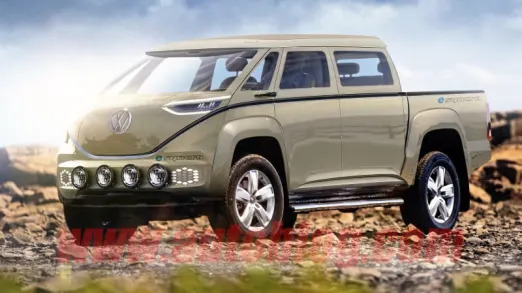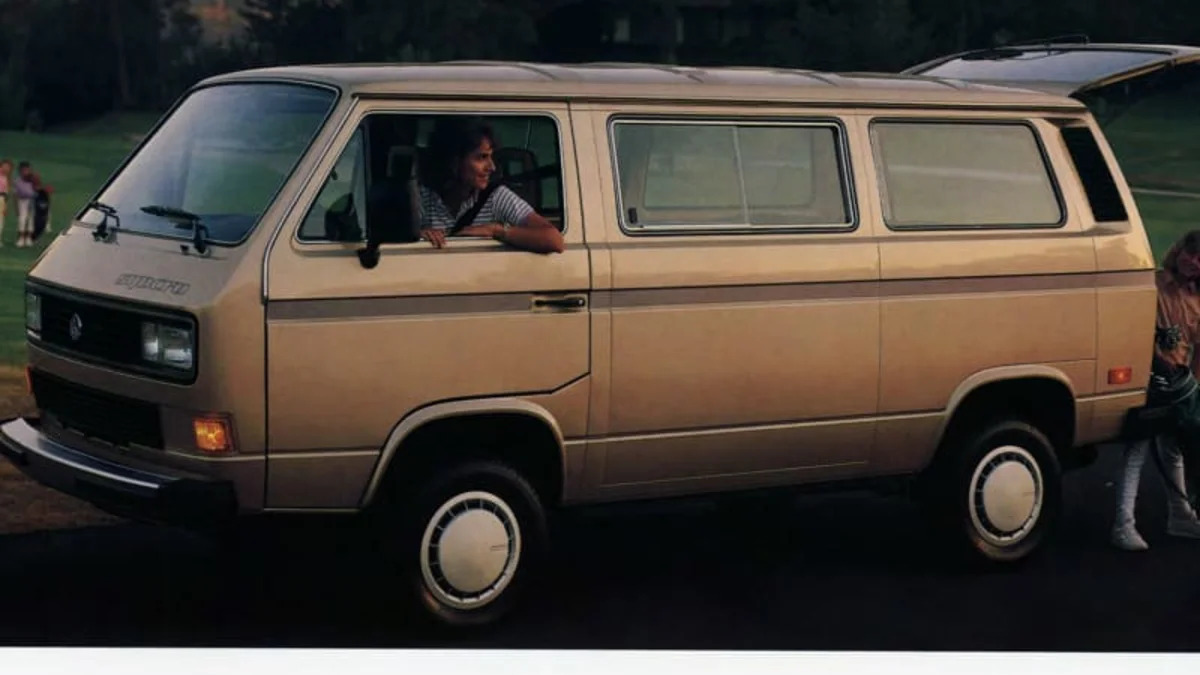Volkswagen has been making quirky vans for decades, and while many people remember the Type 2 generation from the 1960s and 70s, there’s a whole world of van variations wearing the iconic giant VW badge. Volkswagen introduced a heavier and larger Type 2 in 1979, and in 1985, the automaker released an all-wheel drive variant called the Vanagon Syncro.
Volkswagen built limited numbers of the vans through 1992, and most of its vans at the time were rear-engine and rear-wheel drive. The system was added at a factory in Graz, Austria, where the Mercedes-Benz G-Class was built, and actually still is today. Interestingly, VW had moved from air-cooled to water-cooled configurations for the van in 1983, before the Syncro was announced.
Never known for their performance and acceleration, the Syncros came with a 2.1-liter gasoline engine making 95 horsepower and 117 pound-feet of torque. Volkswagen also equipped a low-range gear with the four-speed manual transmission. The van added a few more features for its second year, including a better air conditioning system, updated gearboxes, and a tachometer.
Syncro quirks and capability
Compared to the standard vans, Vanagon Syncros got larger brakes and reinforced bodywork. The wheelbase was stretched by an inch, and the Syncro got larger CV joints. Volkswagen added underbody protection with skid plates and bracing, but like many of its older models, the vans didn’t come without their mechanical quirks. The transmission and rear differential share oil in the original Syncro design, which could cause problems, and there were failures with other drivetrain components, such as the differential housing. Later models picked up different engine choices, some of which brought their own headaches.
Despite the quirks, the Syncros were surprisingly capable off-road. The four-wheel-drive system used a viscous coupling — not uncommon today, but exciting in its day — to permanently spread the engine's torque to all four wheels. A rear locking differential was fitted, and some markets got an optional front locker as well. The driver could control the diffs from the cabin with buttons. Suspension travel and ground clearance were increased, lowered gearing was fitted and the fuel tank was enlarged. The vans remain popular with overlanders and campers, as their mix of capability and interior function is hard to beat, even to this day.
Depending on the original owner’s desires and the specification, the Syncro could be outfitted with a number of seating, sleeping, and even cooking options. Many owners have rebuilt the vans with more modern interiors and updated camping/living accommodations. Popular upgrades include showers, heating and electrical systems, better kitchen gear, and more.
A popular mod for the vans is a replacement engine, sometimes with more modern turbodiesels and sometimes with Subaru engines and transmissions that maintain the VW's traditional boxer engine design, but with a lot more power.
The ID. Buzz could be an ultra-modern replacement
Volkswagen hasn’t sold a van in the United States since the ill-fated, Chrysler-derived Routan, which sold in dismal numbers for a few years. That’s changing with the new ID. Buzz, and with the electric van, there could be an opportunity for VW to bring back the Syncro – or something like it.
Volkswagen’s MEB platform is highly flexible, underpinning vehicles ranging in size from small crossovers to midsize sedans to cargo vans. At the same time, the new ID. Buzz will lack the physical drivetrain components that the original vans had to carry, and its electric powertrain easily enables all-wheel drive. That gives the ID. Buzz a flatter floor and more space inside. It also allows more interior configurations since the only thing under the floor is the battery.


The crew at Autoblog has long been intrigued by the possibilities potentially provided by VW's electrified van. Back in 2017, we presented renderings that we'd still love to see make the light of day, including an all-wheel-drive Syncro model. We pictured a pickup version, but a more straightforward van would also be great. We'd be surprised if there weren't a camper model in the works, but the return of the Syncro may be more interesting to an American car-buying population seemingly infatuated with utility vehicles.
There’s nothing official yet, but it would make sense for VW to introduce a modern-day Syncro, even if the brand's all-wheel drive system is now called 4Motion. The company also still makes vans for other markets and already offers camper-ready models. Buyers wanting a life on the road can pick up a Volkswagen California with camp-ready features.
As it transitions to a fully-electric vehicle catalog, the ID. Buzz will replace the California, so it’s quite likely there will be adventurous models available. Will that lead to another utilitarian, off-the-beaten-path, all-wheel-drive van from Volkswagen? We sure hope so.
Related video:


Sign in to post
Please sign in to leave a comment.
Continue